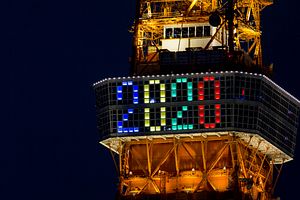With a little under two years left before the Tokyo Olympics, the Olympic budget has quadrupled. Inconsistent budget estimates have left the administration and taxpayers alike scratching their heads as to what the overall cost of the Olympics actually will be.
Earlier this month, the national government’s Board of Audit report revealed a surge in total costs to almost 2.81 trillion yen ($25 billion) with further increases expected as deadlines tighten. This means that, rather than meeting original projections of being the cheapest Olympics, the Tokyo 2020 games are on the way to becoming the second most expensive, after the Beijing 2008 Summer Olympics.
“Compact Olympics” was the catchphrase used by officials to win over the public and International Olympic Committee officials in 2013. The original bidding submission boasted a complete budget of approximately 734 billion yen. But fast forward to December 2017, and the Olympic organizing committee announced overall spending had ballooned to 1.35 trillion yen.
Olympic costs have been shared equally between the central government, Tokyo metropolitan government, and Olympic Organizing Committee, to the tune of 600 billion yen each. But from the central government’s share designated for Olympic “related” projects, originally 150 billion yen, has reached 801.1 billion yen.
It’s a tense time for Olympic organizers as updated budget calculations are at constant odds with Board of Audit figures and the Cabinet Secretariat message that central government spending is 112.7 billion yen –– less than one-seventh of the Board of Audit number. Meanwhile, figures released so far have only been aggregate sums rather than a complete breakdown from each department and agency.
Just how the budget has been blown out of proportion stems from disagreement on the division of expenses that are considered directly essential for the Olympics and related expenses. Currently there are 286 Olympic related projects undertaken by government bodies that have already cost 650 billion yen. The Board of Audit’s report revealed upgrades to weather satellites, major highways, transport around the stadium, hydrogen car development, and heat stroke awareness, among other projects.
The soaring Olympic budget peaked in January after Tokyo Governor Yuriko Koike billed the Tokyo metropolitan government for additional “indirect” and “direct” expenses related to volunteer training, inbound promotion, and removing barriers from venues for paralympic athletes. The move bumped costs up by an additional 810 billion yen.
The Tokyo Olympic Committee has heavily criticized the types of indirect spending taken from the Olympic budget. Committee Chief Yoshiro Mori said ministry billed costs for heat countermeasures, inbound promotion, and face recognition security are regular administrative responsibilities and while they were not unrelated they are not direct Olympic costs. Committee CEO Toshiro Muto also labelled the current budget as inaccurate, arguing projects linked to the Olympics have been stretched beyond the original intention of the Olympic budget.
The lack of a capped budget and government administrations laying blame on one another is a slap in the face to Japanese taxpayers, who are footing 80 percent of the bill. To add insult to injury, in order to curb spiraling social security spending and desperately improve child care facilities, a goods and service tax hike is due in October 2019.
The Board of Audit recommended the central government and organizing committee carefully review the relevance of unrelated policies to the Olympics in order to grasp the overall scale of expenses.
When mega projects like the Olympics are mismanaged, host countries face crippling debt, as seen by previous hosts Greece and Brazil. And given that no host in Olympic history has contained costs within the original budget, hosting the world’s largest sports festival has become less appealing.
This discouraging trend led to the IOC’s “new norm” reforms, offering cost cutting concessions to help alleviate the financial burden. Already 49 measures have been applied to the 2020 Tokyo summer Olympics enabling $2.2 billions dollars worth of savings. But the full benefits will be reaped by the Beijing 2022 Winter Olympics and Paris Summer 2024 Olympics.

































